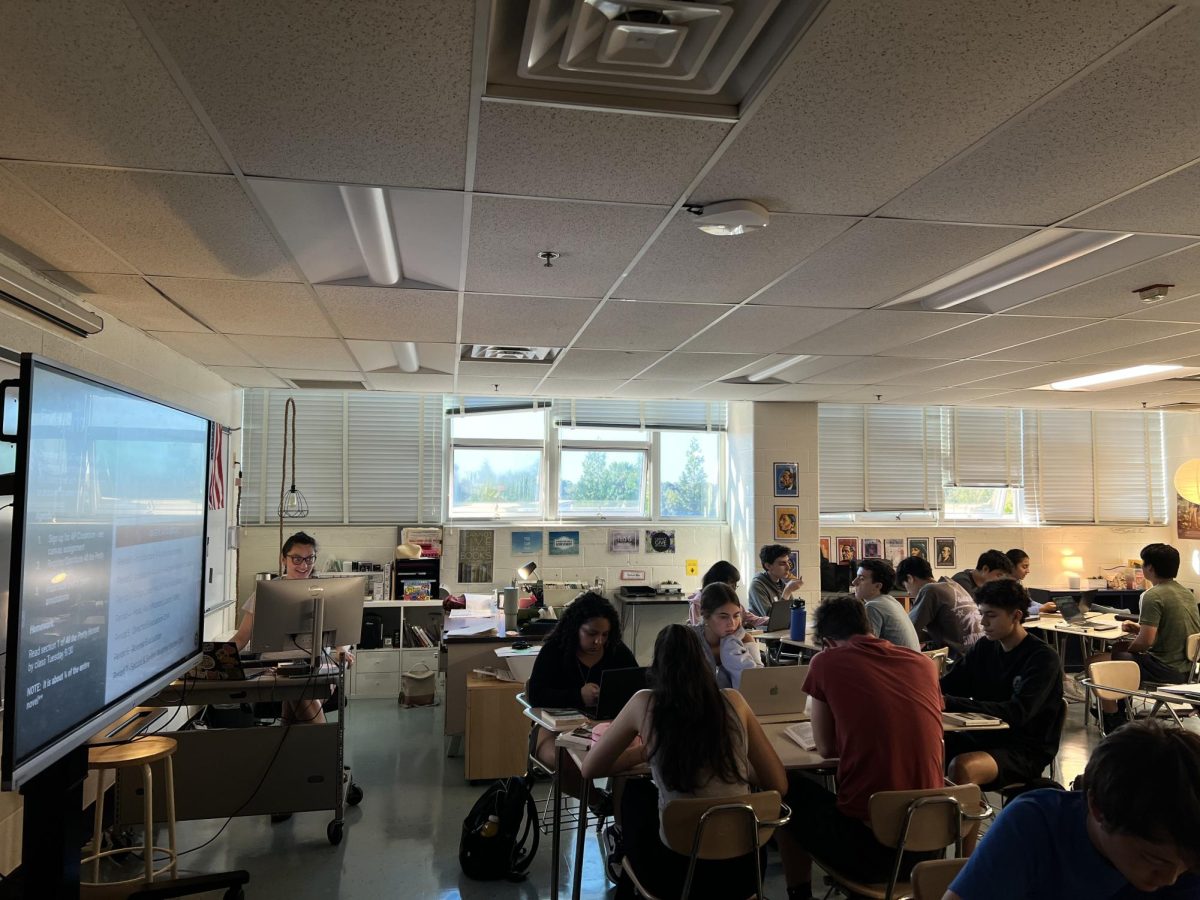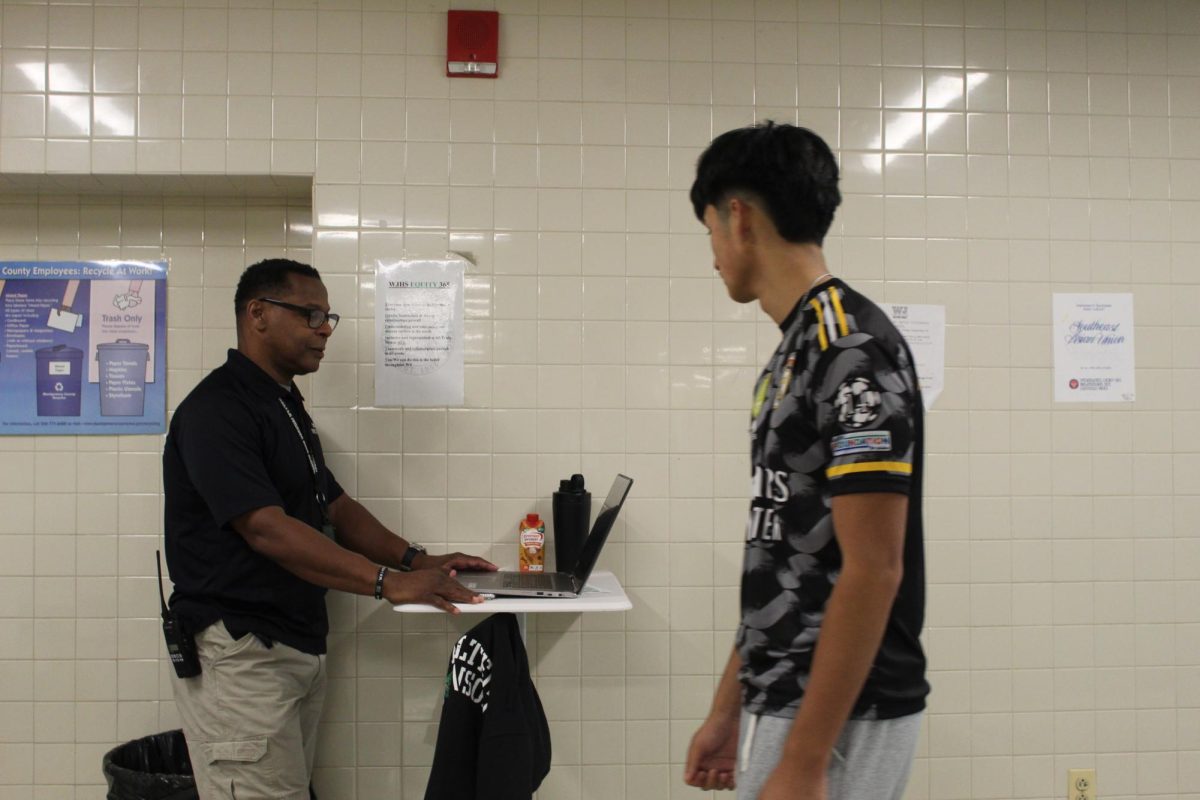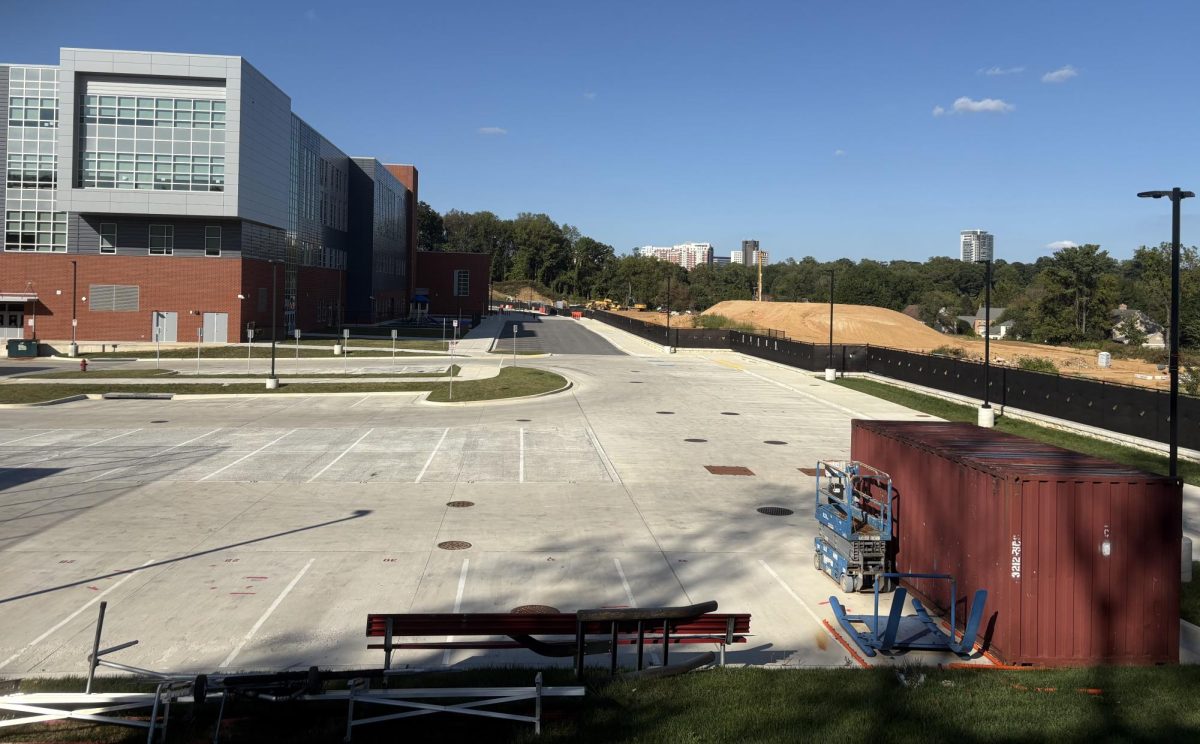An increase in illness among faculty and students since the beginning of the school year has led to speculation that the leading cause of the sickness is mold in the building. Administration has denied the existence of mold in the building despite these concerns.
The supposed mold has reportedly been most prevalent in the lower floors. Honors English 11 teacher Eliana VanCuran reported feeling ill during time spent in her classroom, room 168.
“I know for a fact [with] the way my body works from previous exposures and things that have happened that I am incredibly allergic to certain kinds of mold, and the pattern of reactions that I’ve had are very consistent with that,” VanCuran said.
As a temporary solution, VanCuran taught for weeks in the Media Center. Since then, administration has provided different spaces with air purifiers for the remainder of the semester, at which time she expects to transfer to an alternate permanent classroom.
Another anonymous teacher also reported feeling ill for the past month. Last week, alleged mold was found on light fixtures in their classroom. The issue was reported to building services, who said they would notify their supervisor. The suspected mold has not been cleared as of Dec. 11.
“[I started feeling sick] probably five days before Halloween. I just had a cough, but there were no other symptoms up until after Thanksgiving,” the anonymous teacher said. “The Sunday night before we came back [from Thanksgiving], I started losing my voice. Then, I tried to lecture for five classes on Monday, and then I lost my voice for a week.”
Although faculty members have brought concerns of mold to the union and school administration, neither administration nor MCPS have formally acknowledged or indicated the issue to the greater community.
Business administrator Kathleen Cosgrove acknowledged a couple of concerns and noted that those classrooms have been evaluated. However, Cosgrove maintains that at this time, there is no confirmation of mold in the building.
Mold may be caused by a number of factors. One idea is that leaks in the building create damp spots on the walls and ceilings, which attract and help cultivate mold.
“Molded or wet ceiling tiles are changed out, but the underlying leaks are not always addressed. If it’s really bad, like it is actively dripping into the classroom, they will do something about it, but if it’s not actively dripping into the classroom, they’re not going to address it,” another anonymous teacher said.
Additionally, according to the second anonymous teacher, the air filters in several classrooms, which are supposed to be changed every 90 days, have not been routinely replaced, causing buildup in the filters. This results in a reduction of airflow throughout the building, which could allow mold to grow.
According to Cosgrove, WJ does not have an assigned HVAC (Heating, Ventilation, and Air Conditioning) manager to oversee the air filtration systems, but rather a plant operator.
“We had a plant operator, but MCPS made changes to that position; the plant operator is in the building three days each week as a Preventive Maintenance Specialist,” Cosgrove said. “The Preventive Maintenance Specialist is not an HVAC manager, but does change belts and filters, and reports HVAC problems to MCPS Maintenance when they occur.”
According to MCPS Environmental Team Leader Brian Mullikin, when there is a complaint of mold in the building, building services fill out an Indoor Air Quality (IAQ) checklist to submit to the MCPS Division of Sustainability and Compliance’s IAQ team. Upon receiving the form, an IAQ specialist conducts air quality tests, visual inspections of the area, and interviews in order to solve the issue. However, the air quality detectors used aren’t specifically designed to identify mold, but rather factors like temperature, humidity, carbon dioxide levels, volatile organic compounds, and more.
The presence of potential mold is not a new issue. According to the second anonymous teacher, there have been recurring problems with mold in the building for over 20 years.
Students have also reported feeling sick while in the building.
“I was completely fine over Thanksgiving, but as soon as I got back in the building, I started having these awful coughs,” junior Lena Sbaschnig said. “I don’t have normal symptoms of a cold, like a runny or stuffy nose, I haven’t had any prior sickness and I’ve never had COVID-19, so I’m convinced that [it’s been from] the mold in this school.”
Allegedly, there is an ongoing investigation surrounding the mold in the building. However, no sources were willing to provide statements on the investigation.















